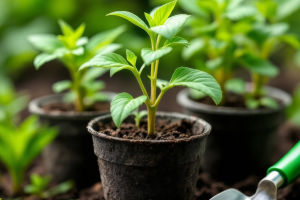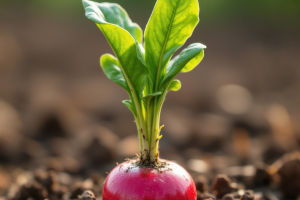Plants are not just a source of beauty and food; they are the foundation of life on Earth. Without plants, ecosystems would collapse, and many essential processes would fail.
In this article, we explore the vital role of plants in ecosystem services, and how their existence is crucial to human survival and the health of our planet.
What Are Ecosystem Services?
Ecosystem services are the benefits that humans receive from nature. These services support life on Earth and include processes like air and water purification, climate regulation, pollination of crops, and the formation of fertile soils. Plants play a central role in almost every aspect of these services, from producing oxygen to stabilizing the climate.
The concept of ecosystem services emphasizes the idea that natural resources are not just for human consumption, but that they also sustain the delicate balance of the environment. Plants are involved in all four types of ecosystem services: provisioning, regulating, supporting, and cultural services.
Provisioning Services: Food, Medicine, and Raw Materials
One of the most direct benefits plants offer is through provisioning services. These are the products that humans directly harvest from nature. Plants provide food, medicine, fiber, and timber – all of which are vital to human survival and economic stability.
Fruits, vegetables, grains, and legumes are obvious examples of plant-based food that sustain people worldwide. Beyond food, plants also provide raw materials for shelter and clothing, such as timber and cotton. Additionally, many pharmaceuticals are derived from plant compounds, showcasing the untapped potential that plants hold in treating a variety of diseases.
Regulating Services: Climate Control and Pollution Removal
Plants also play an indispensable role in regulating environmental conditions. They contribute significantly to climate control by absorbing carbon dioxide and releasing oxygen during photosynthesis. This process helps to mitigate the effects of climate change by reducing greenhouse gases in the atmosphere. Forests, wetlands, and other plant-rich ecosystems act as carbon sinks, sequestering carbon and thereby regulating the Earth's temperature.
Moreover, plants contribute to air and water purification. Trees and plants filter pollutants from the air by trapping particles and absorbing harmful gases. Aquatic plants, on the other hand, play a critical role in water filtration by absorbing excess nutrients and toxins, maintaining the quality of both freshwater and marine ecosystems.
Supporting Services: Soil Fertility and Biodiversity
Plants provide supporting services by maintaining soil health and fostering biodiversity. Plant roots help prevent soil erosion, ensuring that soil remains fertile and able to support the growth of more plants. This process is especially crucial in preventing desertification and maintaining agricultural productivity.
Additionally, plants are the backbone of biodiversity. Forests, grasslands, and other plant ecosystems support diverse wildlife, offering food, shelter, and breeding grounds. In turn, a healthy, diverse plant community supports the survival of countless animal species, contributing to the overall health of ecosystems.
Cultural Services: Connection to Nature and Well-Being
Beyond their material and environmental contributions, plants offer cultural services that impact human well-being. Throughout history, plants have played an essential role in religion, folklore, art, and recreation. Gardens, parks, and green spaces are not only sources of beauty but also contribute to mental health by offering places for relaxation and recreation.
In many cultures, plants hold symbolic meanings and are integral to traditions and rituals. Whether through the cultivation of specific plants for medicinal purposes or the aesthetic pleasure of a flower garden, plants connect people to nature and help foster a sense of community.
The Challenges to Ecosystem Services and Plant Life
Despite the immense value of plants in ecosystem services, they face significant threats from human activities. Deforestation, urbanization, and agricultural expansion are rapidly degrading plant habitats and reducing the diversity of plant species. The loss of biodiversity, especially in tropical rainforests, has profound effects on the services plants provide, including the destabilization of the climate and the disruption of food chains.
Climate change itself poses a major challenge, as shifts in temperature and rainfall patterns threaten to alter the habitats where many plants thrive. Invasive species, pests, and diseases are also threatening plant populations, further undermining the ecological stability that humans depend on.
What Can We Do to Protect Plants and Ecosystem Services?
There is still hope for the preservation of plants and the ecosystem services they provide. Governments, organizations, and individuals must take action to reduce habitat destruction, limit pollution, and restore degraded ecosystems. Sustainable agricultural practices that protect plant diversity, such as agroforestry and permaculture, can help maintain healthy ecosystems while providing food and resources for communities.
Conservation efforts aimed at protecting natural habitats, including forests, wetlands, and grasslands, are essential for preserving the plants that sustain these ecosystems. Efforts to combat climate change, such as reducing carbon emissions and transitioning to renewable energy, will also help safeguard plant species and their ability to provide regulating services.
Conclusion: The Future of Plants in Ecosystem Services
The importance of plants in ecosystem services cannot be overstated. They are the lifeblood of ecosystems, contributing to food security, climate stability, biodiversity, and human well-being. By recognizing the value of plants and taking action to protect them, we can ensure a sustainable future for both humanity and the natural world.
Remember, every time you plant a tree, a garden, or even a small flower pot, you're helping to preserve these vital services. So next time you see a plant, think about all the ways it is helping sustain life on Earth – it truly is a gift from nature!


